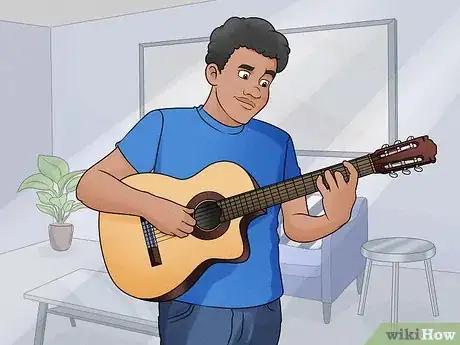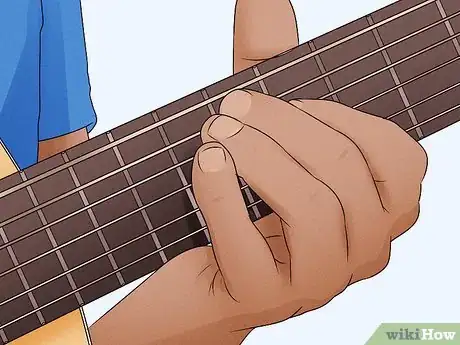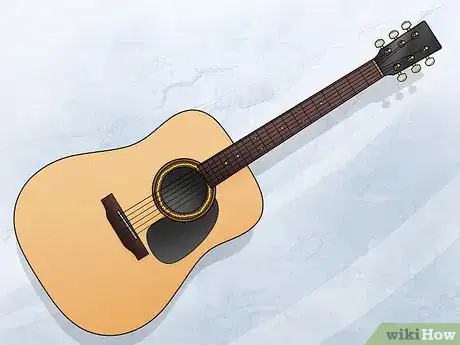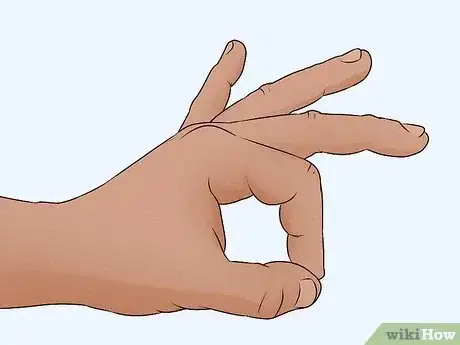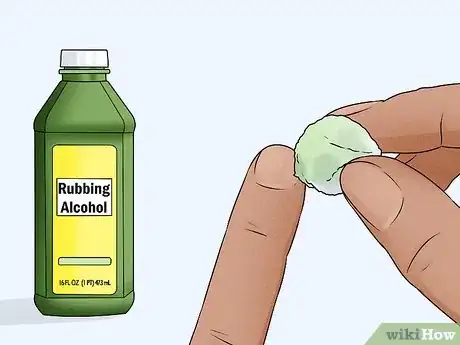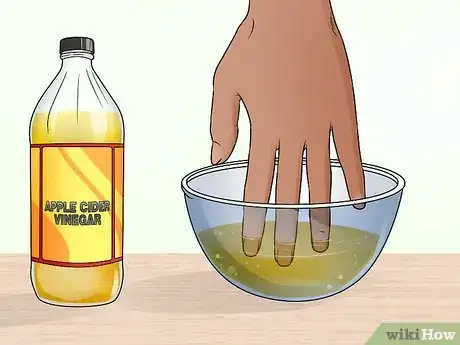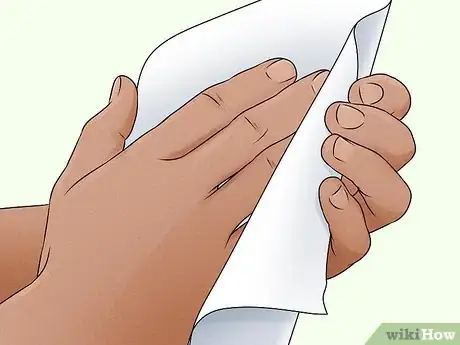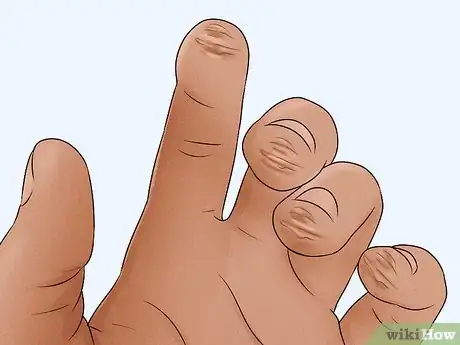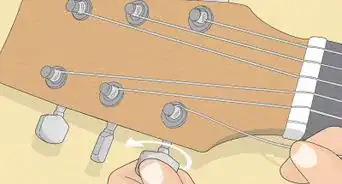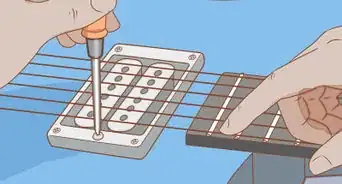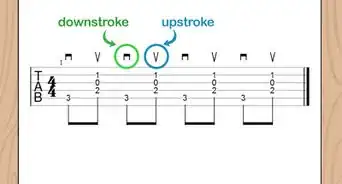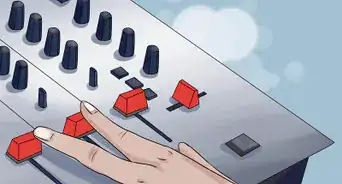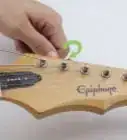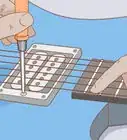This article was co-authored by Aaron Asghari and by wikiHow staff writer, Hunter Rising. Aaron Asghari is a Professional Guitarist and the lead guitarist of The Ghost Next Door. He received his degree in Guitar Performance from the Guitar Institute of Technology program in Los Angeles. In addition to writing and performing with The Ghost Next Door, he is the founder and primary guitar instructor of Asghari Guitar Lessons.
wikiHow marks an article as reader-approved once it receives enough positive feedback. In this case, 93% of readers who voted found the article helpful, earning it our reader-approved status.
This article has been viewed 181,079 times.
It’s so fun to jam on a guitar, but it’s a real pain when your fingers start hurting after a few minutes. Experienced guitarists build up hard calluses on their hands so it’s easier to play for a long time. Luckily, there are some things you can do to strengthen your fingers so you can keep playing and improving. We’ll walk you through a few ways to develop finger calluses and how to keep them tough so you can rock out!
Steps
Expert Q&A
Did you know you can get premium answers for this article?
Unlock premium answers by supporting wikiHow
-
QuestionHow long does it take for your fingers to get used to guitar?
 Aaron AsghariAaron Asghari is a Professional Guitarist and the lead guitarist of The Ghost Next Door. He received his degree in Guitar Performance from the Guitar Institute of Technology program in Los Angeles. In addition to writing and performing with The Ghost Next Door, he is the founder and primary guitar instructor of Asghari Guitar Lessons.
Aaron AsghariAaron Asghari is a Professional Guitarist and the lead guitarist of The Ghost Next Door. He received his degree in Guitar Performance from the Guitar Institute of Technology program in Los Angeles. In addition to writing and performing with The Ghost Next Door, he is the founder and primary guitar instructor of Asghari Guitar Lessons.
Professional Guitarist & Instructor
-
QuestionWhat if I don't have a grip master and cannot buy one?
 wikiHow Staff EditorThis answer was written by one of our trained team of researchers who validated it for accuracy and comprehensiveness.
wikiHow Staff EditorThis answer was written by one of our trained team of researchers who validated it for accuracy and comprehensiveness.
Staff Answer wikiHow Staff EditorStaff Answer
wikiHow Staff EditorStaff Answer -
QuestionHow do I keep my fingers conditioned when I'm not able to play guitar?
 Community AnswerIf you have fingernails on your thumbs, alternate pressing the nails against the tips of your other fingers.
Community AnswerIf you have fingernails on your thumbs, alternate pressing the nails against the tips of your other fingers.
Warnings
References
- ↑ https://www.guitaraficionado.com/do-calluses-help-you-play-guitar/
- ↑ https://ledgernote.com/columns/guitar-guru/guitar-calluses/
- ↑ https://www.aimm.edu/blog/how-to-build-guitar-calluses
- ↑ https://ledgernote.com/columns/guitar-guru/guitar-calluses/
- ↑ https://ledgernote.com/columns/guitar-guru/guitar-calluses/
- ↑ http://thevault.musicarts.com/guitar-tips-toughening-fingertips/
- ↑ https://www.guitaraficionado.com/do-calluses-help-you-play-guitar/
- ↑ http://thevault.musicarts.com/guitar-tips-toughening-fingertips/
- ↑ https://www.theguitarlesson.com/guitar-lesson-blog/beginner-guitar-lessons/build-calluses-guitar/
- ↑ https://youtu.be/p9OOHq7lJ64?t=137
- ↑ http://thevault.musicarts.com/guitar-tips-toughening-fingertips/
- ↑ https://www.theguitarlesson.com/guitar-lesson-blog/beginner-guitar-lessons/build-calluses-guitar/
- ↑ https://www.guitaraficionado.com/do-calluses-help-you-play-guitar/
- ↑ https://www.theguitarlesson.com/guitar-lesson-blog/beginner-guitar-lessons/build-calluses-guitar/
